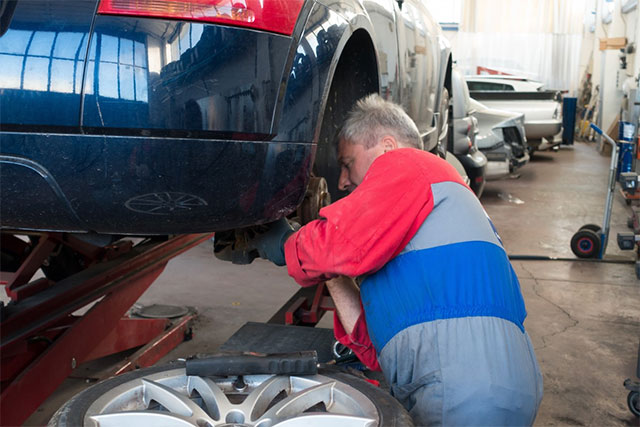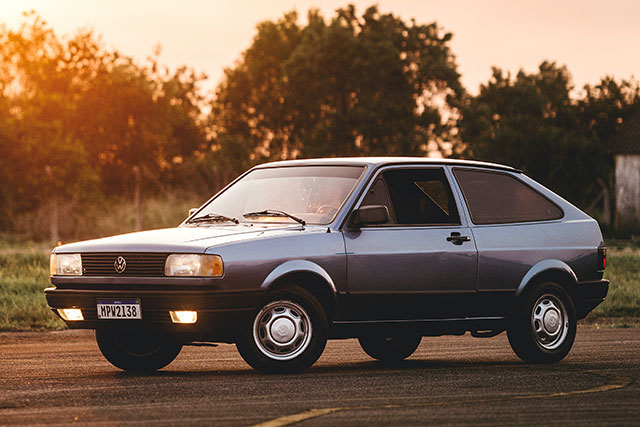Keeping your vehicle road worthy isn’t only a legal requirement, but it ensures you stay behind the wheel for longer. Regular servicing means fewer trips to the garage and the best part? You can do most of it yourself from the comfort of your own home (or driveway!)
Table of Contents
Car Maintenance Tips To Prevent Accidents
So grab your car manual, grab a few essentials such as engine oil, water and a tyre pressure gauge and away you go. Here are Carvine’s 10 car maintenance tips for getting the most out of your motor without breaking the bank:

Is your car due a service?
- Before you get started, it’s worth checking when your next service is due. Generally, a service is typically recommended every 12,000 miles or once every 12 months, depending on which comes first.
- If you are unsure, check your car’s manual and your mileage. Many modern vehicles will clock when your service is due on the dashboard. But whatever you do, don’t leave it until it’s too late!
1) Check your engine oil
- To keep your engine healthy, you should regularly check your engine oil levels. Simply remove the car’s dipstick, wipe it with a clean cloth, push it back into the bottom, and pull it out again to see where the oil level comes to. If it is below the minimum, you need to top it up, and above the maximum, you will have to either drain it or speak to your local mechanic.
- You want your engine oil to sit healthily between the minimum and maximum before you fire up the engine and make any journey.
- Too low, you risk breaking down or causing damage to your vehicle’s engine. Too high, and you could overload your engine with potentially devastating effects.
2) Tyre pressure is important
- Your car’s tyres are the one thing that connects your vehicle directly to the road surface, so you need to take care of them. If they are pumped up too high or low, the tyre pressure can impact how your car handles on the road and wear your tyres out – instantly shortening their lifespan.
- If you’re unsure what your car’s tyre pressure should be, refer to the car’s manual. And remember, the minimum legal tread depth is 1.6mm; anything below this suggests that they will need to be replaced sooner rather than later.
3) Keep an eye on the battery
- No matter what vehicle you drive, the battery is essential for your car to run! A flat or faulty battery is one of the primary causes of vehicle breakdowns. But this can be easily avoided. If possible, change your car’s battery every three years to keep your engine running smoothly.
- Look at the signs. If there is something wrong with your battery, your car will try to tell you! Keep an eye out for:
- Slow engine turnover when you start the car
- The red battery light on your dash may flicker, take longer to go out or stay on throughout your journey
- Pro tip: Get breakdown cover for your car so you don’t find yourself stranded.
4) Engine coolant matters
- Coolant (a mixture of water and antifreeze) is responsible for keeping your engine at the right temperature, regardless of how hot, cold or stormy it is outside.
- Refer to your car’s manual for guidance on keeping your engine coolant topped up! However, if your engine coolant needs to be replaced, speak to your local mechanic, as specialist tools are usually required.
5) Keep your windscreen wash topped up
- Not only is it illegal to not have fluid in your car’s screen washer bottle, but you must also have clear visibility when you’re behind the wheel.
- To do this, ensure your windscreen stays clear of dust and grime, and keep your windscreen wash topped up – particularly in the winter, before long journeys and if you are travelling at nighttime.
- If you have enough bootspace, keep a smaller bottle of windscreen wash to hand for emergencies.
- While you’re there, wipe down your side and centre mirrors so all areas of visibility are in check.
6) Test your windscreen wipers
- Now that you’ve topped up your windscreen wash, you need to check your wipers. Make sure they are in good condition, with no tears, holes or sticky edges. If they are torn or frayed, it’s time to replace them.
- While you’re inspecting your wipers, take a look at your windscreen for any chips. If you spot one, get it repaired as soon as possible to avoid any further, costly damage.
7) Test your brakes
- Your brakes are an essential part of safe driving, so make sure they work correctly. Test them on your driveway to see if they are spongey or if they go beyond where they should be when you press down.
- While you might feel up to the job of adjusting them, if you feel unsure, again, speak to your local mechanic for helpful tips or to do it for you.
8) Check your lights and indicators
- Car lights don’t only help you see at night, but they are integral to how you drive. They signal to other drivers your intentions on the road and make you stand out on shadowy, overcast roads.
- Simply get someone to stand outside your car and test each light (don’t forget your fog lights!) and indicator to ensure they work correctly.
9) Keep your eyes peeled for rust
- Rust can cause severe damage to your vehicle’s bodywork and value if you don’t prevent it from setting in. While you might think it is purely a cosmetic problem, it can cause unrepairable damage to your car’s frame if left alone.
10) Time to consider car finance?
- Sometimes, it’s time to move on and find a fresh set of wheels. So rather than forking out a small fortune at the dealership, why not consider car finance?
- It’s an affordable and flexible solution to getting a new car that not only will be fitted out with all the latest mod cons and safety features but will likely come with an excellent manufacturer’s warranty and service.
Keep your car on the road for longer with our ten simple maintenance tips. Are you ready to roll up your sleeves and give it a go?













